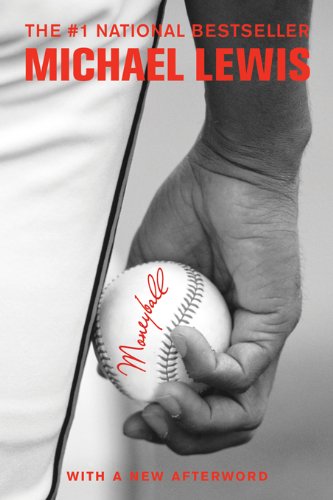

This article is an excerpt from the Shortform summary of "Moneyball" by Michael Lewis. Shortform has the world's best summaries of books you should be reading.
Like this article? Sign up for a free trial here .
Who is Jeremy Brown in Moneyball? Why does Billy Beane decide to draft Jeremy Brown?
Jeremy Brown in Moneyball is a catcher that is overlooked by scouts and other teams. But Billy Beane exploits this thinking and picks Jeremy Brown for the A’s, beginning Jeremy Brown’s MLB career.
Jeremy Brown: A Top Draft Pick?
By the 2002 Major League Baseball Draft, Billy has assembled a sabermetric-focused team in the front office, including assistant GM Paul DePodesta, who had graduated from Harvard with a degree in economics and never played professional baseball himself. As he grows into the GM role, Billy begins to run the team more in line with his principles, regardless of conventional wisdom. He is a micromanaging and almost autocratic GM, deferring very little to his scouting staff and even to the manager. Those who are new to the A’s organization quickly realize that Billy runs everything—trades, drafting decisions, scouting, and even tactical baseball decisions on the field.
In keeping with his principle of total control, Billy knows exactly which players he wants to select in the 2002 draft. But they still must overcome the conventional wisdom and conservatism of the A’s scouting staff, many of whom are holdovers who have been with the team for years before Billy became GM.
But to understand why that draft is a pivotal moment for Billy, we first need to understand why the amateur draft is so critical to a team like the Oakland A’s, and Jeremy Brown’s Moneyball draft.
The Amateur Draft
As we’ve seen, player salaries had exploded since the 1970s. And by the time Billy Beane is at the helm of the Oakland A’s, the team’s ownership has stressed profitability above all else. The team is to be run on a shoestring budget, with cost containment the guiding principle. Thus, Billy must acquire effective players on the cheap. His acceptance of James’s sabermetric principles greatly helps him in this, empowering him and his staff to identify undervalued players that are overlooked by the other teams. Jeremy Brown in Moneyball is one of these players.
The emphasis on cost containment is why Billy Beane and his staff place such a strong emphasis on the entry draft. Unlike free agency bidding wars, the draft is where young talent is obtained for very little money. Under league rules, when a team drafts a player, they acquire the exclusive right to sign that player: if the player refuses to sign, they have no right to sign with another team unless they choose to reenter the draft. Once they sign, the team has the exclusive rights to their first seven years in the minor leagues and six in the majors.
Moreover, because these are young players directly out of high school or college, eager to play in the major leagues, and with no legal right to sign with a competing team, the team that drafts them has enormous leverage during the contract negotiation process. As a result, extraordinarily talented players coming directly from the draft can be signed for a fraction of what they would cost on the open market. For teams with deep pockets, the draft doesn’t matter so much—they can always afford to grab players through free agency, even though they often overpay and run their payrolls inefficiently. But for a stingy team like the Oakland A’s, the draft is their best shot at putting together a winning roster. Jeremy Brown in Moneyball can help.
In 2002, the A’s hold seven picks in the first round. After having their 2001 roster picked clean through free agency by the free-spending, big-market teams like the Boston Red Sox and New York Yankees, the 2002 draft represents a remarkable opportunity for the Oakland A’s to replenish their roster. Billy Beane wants to maximize this opportunity. He has a wish list of 20 players he wants and is determined to make sure that they become Oakland A’s by the end of draft day. To do that, he must overcome the irrational biases of his own scouting staff, while outmaneuvering 29 other GMs. Particularly if he wants to launch Jeremy Brown’s MLB career.
Jeremy Brown, Moneyball First Round Draft Pick
Getting the players on the wishlist will be difficult. Whether or not they are still available depends on what the other teams do. Although Billy and Paul DePodesta have largely prioritized players whom they believe will be overlooked by the other clubs, there is always going to be some overlap with what other teams want. Jeremy Brown in Moneyball is no exception.
The picks any team ends up with at the draft depends on a combination of prioritization, strategy, and pure luck—after all, a general manager has very limited ability to prevent one of the teams ahead of them from picking a coveted player. The Oakland shortlist is made up of overlooked and undervalued, but nevertheless, extremely talented college players. Given the team’s financial squeeze, Billy and Paul must draft top-quality players and sign them for a fraction of what they would be able to command on the open market. They target diamond in the rough players, young men who can be turned into effective professional players once they are trained in the Oakland system, which emphasizes on-base percentage over slugging.
At the top of Billy’s shortlist are two amateur players—fielder Nick Swisher and catcher Jeremy Brown. Swisher is one of the relatively few players upon whom the traditional scouts and the sabermetric-focused newcomers are in agreement: the young player is a surefire MLB star.
Jeremy Brown in Moneyball on the other hand, is an unconventional pick, especially so high in the first round. Most of the scouting on Brown has assigned him a very low place in the draft, if, indeed, he will be drafted at all. Although the fielder has what appear to be great stats coming out of college, most of the scouting world has dismissed him as being overweight by major league standards. He simply doesn’t look the part of a baseball star. And to traditional scouts who base their evaluations of players almost entirely on firsthand observations, this seems like the kiss of death to any team that would be so foolish as to draft him—if Swisher looks like a guaranteed star, Brown looks like the epitome of a bust.
But Billy knows better and sees Brown’s upside, particularly his on-base percentage. Before the draft, the A’s scouting staff contacts Brown, telling him that they are interested in selecting him in the first round. Brown himself is incredulous, thinking that the call must be one of his friends pranking him. Why would a professional baseball team squander one of its precious first round picks on him? He has been so influenced by conventional baseball wisdom that he discounts his own potential.
Jeremy Brown’s MLB career began with the A’s, where he is a top draft pick due to his ability to get on base. Jeremy Brown in Moneyball shows Billy Beane’s confidence in his Sabermetrics, where he goes against conventional baseball wisdom.

———End of Preview———
Like what you just read? Read the rest of the world's best summary of Michael Lewis's "Moneyball" at Shortform .
Here's what you'll find in our full Moneyball summary :
- How Billy Beane first flamed out as a baseball player before becoming a general manager
- The unconventional methods the Athletics used to recruit undervalued players
- How Sabermetrics influences American baseball today






